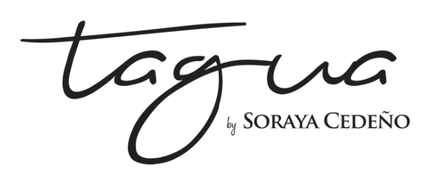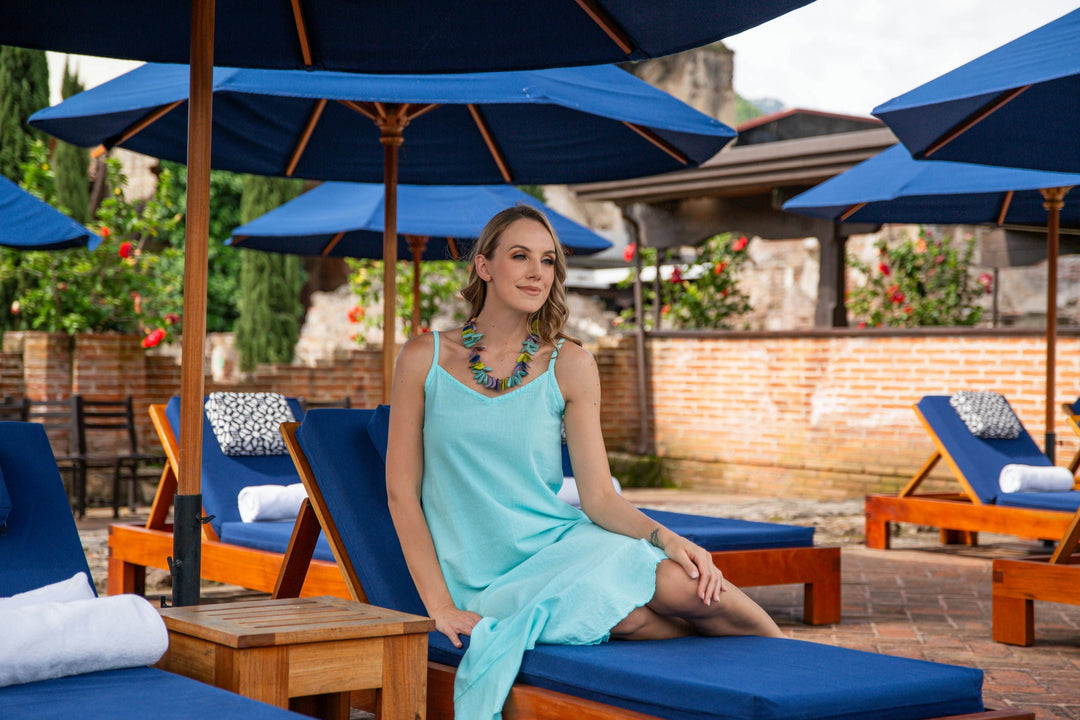The Future of Sustainable Fashion Accessories in the Jewelry Industry
The jewelry industry is undergoing a quiet revolution. As climate concerns and consumer awareness grow, many people are now seeking alternatives to mass-produced, environmentally harmful fashion accessories. This shift has brought sustainable fashion to the forefront not just as a trend, but as a movement. One natural material that’s capturing attention for its beauty and low environmental impact is the tagua nut.
At Tagua by Soraya Cedeño, sustainability meets style in every handcrafted piece. But this transformation isn’t happening in isolation. It reflects a broader evolution in how jewelry is made, bought, and valued.
What is the Tagua Nut and Why Does It Matter?
The tagua nut originates from the seeds of the Phytelephas palm tree, which is native to the rainforests of South America. Often referred to as "vegetable ivory" due to its hardness and smooth, ivory-like finish, tagua has emerged as an innovative and sustainable alternative to animal ivory and synthetic plastics. Here’s why this matters:
No Trees Are Cut
Harvesting tagua nuts doesn’t require cutting down the tree, only collecting the nuts after they naturally fall.
Biodegradable and Renewable
Unlike plastic-based accessories, tagua jewelry naturally breaks down over time, leaving no harmful residues behind.
Supports Forest Conservation
When local communities can benefit from preserving rainforest ecosystems, it creates strong incentives to protect, rather than clear, the land.
Research from the Rainforest Alliance has shown that utilizing native, renewable resources, such as tagua, helps promote biodiversity and sustainable livelihoods in South America, particularly in Ecuador, where Tagua by Soraya Cedeño sources its materials.
The Rise of Sustainable Fashion in Jewelry
Fashion is one of the most polluting industries globally. According to the United Nations Environment Programme, the fashion industry is responsible for about 10% of global carbon emissions and 20% of global wastewater.
Jewelry may represent a smaller piece of that puzzle, but traditional metal mining, stone sourcing, and mass production methods still leave a significant environmental footprint. In response, designers and buyers alike are prioritizing:
-
Ethical sourcing of materials
-
Low-impact manufacturing
-
Long-lasting, versatile designs
-
Support for artisan-made goods
Handmade, sustainable jewelry, especially pieces crafted from natural materials like tagua, fits beautifully within this new framework. It reduces environmental harm, celebrates cultural heritage, and allows consumers to make conscious, stylish choices.
The Boutique Jewelry Boom and Travel Retail Opportunity
Another major force shaping the future of fashion accessories is the growth of boutique jewelry and travel retail. As travelers seek unique, regionally inspired products that reflect the places they visit, brands like Tagua by Soraya Cedeño are rising to meet this demand.
Boutique jewelry offers a refreshing contrast to the cookie-cutter designs often found in big-box stores. It’s more personal, more meaningful, and, in the case of tagua jewelry, more sustainable.
Tagua’s vibrant colors and natural elegance make it especially appealing in:
-
Resort shops
-
Airport boutiques
-
Cruise line stores
-
Gift shops focused on eco-conscious tourists.
With growing interest in eco-friendly jewelry, this niche is continuing to expand.
How Tagua Jewelry Is Changing Sustainable Fashion
Tagua jewelry isn’t just a beautiful accessory; it’s a statement about values. By choosing handmade tagua pieces, consumers are actively:
-
Supporting female artisans in rural Ecuadorian communities
-
Promoting fair trade and ethical craftsmanship
-
Reducing their carbon footprint with renewable materials
Each Tagua by Soraya Cedeño piece is carved, dyed, and assembled by hand using traditional techniques. These time-honored skills, passed down through generations, add soul and significance to every design. The result is jewelry that’s not only fashionable but also deeply rooted in heritage and purpose.
Unlike fast fashion accessories, these pieces are built to last, both physically and emotionally.
Scientific and Environmental Benefits of Tagua
A few key facts supported by environmental research:
Tagua Reduces Deforestation Pressure.
According to a study by Ecological Economics, non-timber forest products, such as tagua, offer sustainable income alternatives to logging and cattle farming.
Tagua is Carbon-Neutral
A 2010 report from the Ecuadorian Institute of Ecology estimates that tagua’s life cycle results in negligible carbon emissions compared to plastic and metal-based materials.
Tagua Promotes Biodiversity
Because tagua trees are part of rich rainforest ecosystems, their protection helps conserve countless other plant and animal species.
These aren’t abstract benefits. When you wear a tagua necklace or bracelet, you’re quite literally choosing to help protect rainforests and empower communities.
Challenges and Opportunities in Sustainable Jewelry
Like any sustainable business, there are challenges to scaling artisan-made accessories:
Education
Many consumers are still unfamiliar with tagua or may not understand what makes it a sustainable option.
Production
Handmade processes require more time, necessitating patience and careful planning.
Market Access
Small-scale artisans often struggle to reach global markets without the proper support.
Tagua by Soraya Cedeño addresses these challenges by creating a transparent and ethical supply chain that connects Ecuadorian artisans to customers in the United States and beyond. The brand’s commitment to quality, storytelling, and impact is helping it stand out in a crowded market.
As more consumers demand accountability and originality in their purchases, the opportunity for sustainable jewelry brands, especially those with strong social missions, to grow continues to expand.
Why the U.S. Market Is Ripe for Tagua Jewelry
The United States is one of the largest markets for fashion jewelry globally. But what’s even more promising is the rise of eco-conscious shoppers in the U.S.
According to a 2023 report from First Insight and Wharton, 76% of Gen Z and Millennials consider sustainability when making a purchase. They value:
-
Natural and recycled materials
-
Ethical production
-
Authentic stories behind the brand
This makes the U.S. a natural fit for handmade, sustainable jewelry. And as travel returns post-pandemic, U.S. retailers in tourism-focused locations (like national parks, resorts, and airports) are increasingly looking for brands that align with these values.
From Ecuador to the World: The Power of Artisan Jewelry
When you wear a piece of jewelry from Tagua by Soraya Cedeño, you’re not just adding beauty to your outfit. You’re participating in a global movement, one that respects nature, uplifts women, and honors traditional skills.
Each bracelet, necklace, or pair of earrings represents:
-
A tree protected in the rainforest
-
A craftswoman empowered with a fair income
-
A customer making an ethical style choice
That’s the future of fashion accessories. It’s no longer about excess or trends. It’s about intentional beauty that aligns with our values.
Join the Movement Toward Sustainable Style
Choose Jewelry That Makes a Difference
Sustainable fashion isn’t about sacrifice, it’s about smarter choices. Tagua by Soraya Cedeño offers eco-friendly jewelry that tells a story, supports communities, and looks stunning in any setting. Whether you're shopping for yourself or seeking unique boutique pieces for travel retail, tagua accessories offer a meaningful way to blend style and sustainability.
Ready to explore the future of sustainable fashion accessories?
Visit https://organictaguajewelry.com to discover artisan jewelry that honors people and the planet one beautiful piece at a time.




